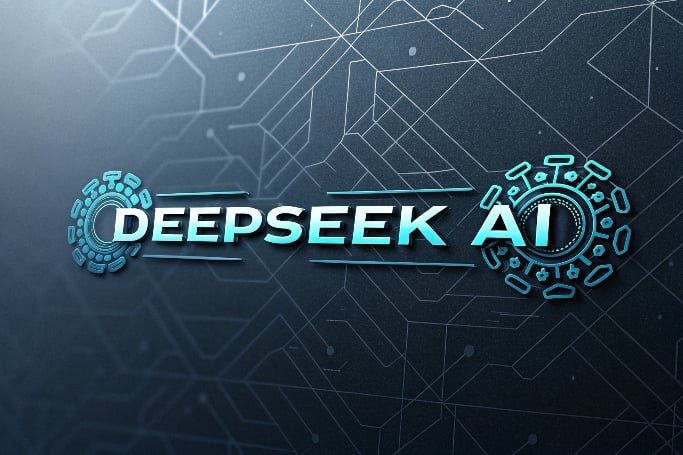As DeepSeek disrupts AI innovation, will the U.S. adapt or fall behind?
How DeepSeek is Changing AI in Silicon Valley

In early 2025, a Chinese AI lab called DeepSeek shocked Silicon Valley by releasing open-source versions of its powerful AI models. These models are as strong as the top ones from companies like Open AI, Meta, and Google. DeepSeek’s rise is making waves in the tech world, with some experts worried about China’s growing strength in AI.
The result? A focus on clarity, function, and balance—qualities that resonate deeply in today’s digital-first world. The typeface Helvetica, meaning “Swiss” in Latin, exemplifies this shift. Its clean lines and neutral appearance have made it a staple of web and graphic design, from corporate branding to subway maps. In modern design, a design system rooted in these principles ensures consistency and coherence across all platforms, offering a structured framework that aligns with user needs and enhances overall user experience.
DeepSeek’s Fast Growth: A Wake-Up Call for Silicon Valley
DeepSeek’s fast progress has forced people to rethink how AI is made and shared. The company claims it built its models faster and cheaper than others. This caught the attention of both tech companies and the U.S. government, who are worried China could outpace America in AI.
DeepSeek’s top model, R1, uses a learning method called “pure reinforcement learning.” This means the AI learns by making mistakes and improving, similar to how a child learns to avoid getting hurt after touching something hot. This method helps DeepSeek’s AI learn quickly, with less data than other models need. Experts think this could change how AI is developed.
While some people doubt DeepSeek’s rapid rise, it’s clear the company is making an impact. Its open-source models are available to anyone with the right hardware, challenging the closed models from big companies like OpenAI, Meta, and Google.
What Makes DeepSeek’s Technology Special?

DeepSeek’s secret to success is its use of reinforcement learning. This approach allows AI to learn through feedback, like how a child learns by testing things out. Kian Katanforoosh, CEO of Workera, explains that this method helps AI develop skills on its own, without needing as much data as other methods.
DeepSeek’s R1 model uses this technique to make AI learning more efficient. Even though OpenAI also uses reinforcement learning, DeepSeek focuses on this method more, which makes its models faster and cheaper to build.
Reinforcement learning is a hot topic in the AI world. Experts believe it could speed up the development of AI models, making them more powerful and cost-effective. If other companies can replicate DeepSeek’s success, AI could evolve faster than we expect.
DeepSeek’s Effect on U.S. AI Policy
DeepSeek’s success has raised questions about U.S. AI policy. The open-source R1 model is an example of how open AI development can be beneficial. Martin Casado, a general partner at Andreessen Horowitz, says that DeepSeek’s success shows the U.S. may have gotten AI regulations wrong. He believes the U.S. should be investing in open-source AI instead of limiting it.
Casado argues that supporting open AI could help U.S. companies stay competitive. If the U.S. doesn’t act quickly, China might gain the lead in AI technology. This shift in the global AI race has led experts to call for the U.S. to rethink its approach to AI policy and open-source development.
The Challenges DeepSeek Faces
Even though DeepSeek’s models perform well, they’re not perfect. Some experts question the company’s claims about its cost-efficiency. DeepSeek says it trained its models for just $5.6 million, which is much cheaper than the cost of other AI systems. However, reports suggest that DeepSeek had access to a large number of Nvidia GPUs, which helped it develop its models quickly.
Additionally, DeepSeek’s models are not flawless. A test by NewsGuard found that R1 gave wrong answers or no answers at all 83% of the time when asked about news topics. The model also refused to answer questions related to China in 85% of cases, possibly due to censorship. These flaws show that DeepSeek’s models still have room for improvement.
Another concern is the possibility of intellectual property theft. OpenAI has accused DeepSeek of using its models to train its own, a practice known as distillation. If this is true, it could raise legal issues for DeepSeek and its models.
The Future of AI: What’s Next?
Despite these challenges, DeepSeek’s rise has changed the AI landscape. The company has shown that it’s possible to build powerful AI systems quickly and cheaply. This could push U.S. companies to reconsider their approach to AI development.
The success of DeepSeek could lead to major changes in how the U.S. handles AI policy. Policymakers and tech companies will need to adapt to the changing global AI competition. To stay ahead, the U.S. may need to invest more in open-source AI and rethink its regulations.
In conclusion, DeepSeek’s rise isn’t just a wake-up call for Silicon Valley—it’s a shift in the global AI race. As China continues to make big strides in AI, the U.S. will need to invest in open AI and adjust its policies to stay competitive.



